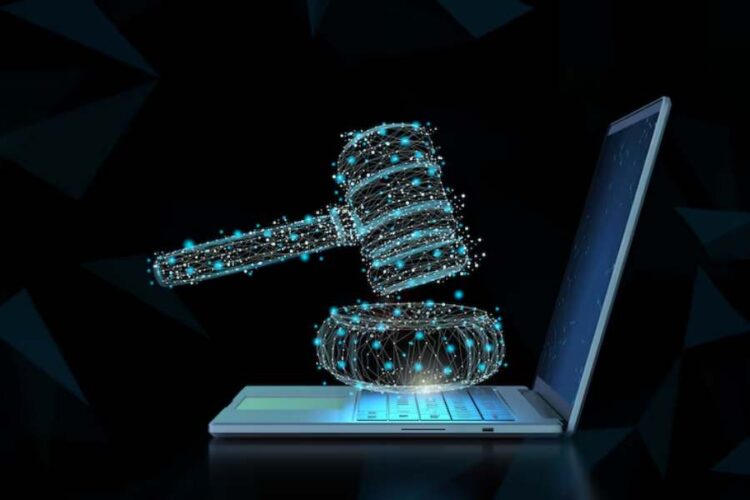It’s strange to initiate a law firm dashboard on a cell phone and check on case news over a cuppa, but here we are. Law, as document-heavy as it’s always been, isn’t immune to the tech wave. And if you were curious as to what legal tech is all about, it’s more than a matter of document digitizing.
Legal tech, if you think about it, is a blend of the law and developing technology aimed at simplifying legal procedure, making service more accessible, and fixing a system that’s run on fumes in all but a few exceptions. But what’s it all really about? And how far does it reach? Let’s take a close look.
Where Law Meets Innovation
Legal technology includes software, platforms, or services that try to supplant, support, or augment traditional legal practice. It might be contract automation software, AI-based legal research, e-discovery software, or even the dispensation of legal information by way of a chatbot. It’s not a matter of convenience. It’s a matter of access, efficiency, and in much ways, equity.
I was gloomy when first investigating these tools. My supposition? That they would be clunky, function-poor, and useful only for large companies with IT teams. That was prior to the day that I helped a group of law students use open-source contract review software on a project. Doubling their speed, they gained greater comfort and enhanced legal analysis as they wrote more and typed less.
Tools Revolutionizing the Industry
Legal tech isn’t one tool, it’s an ecosystem. This is what it includes:
- AI Research Tools: AI tools such as Casetext or Lexis+ search through thousands of case files at lightning speed, providing precedents quicker than humanly possible.
- Contract Lifecycle Management (CLM): Take into consideration Ironclad or DocuSign, not just signing, but drafting, tracking, and automatic renewal reminders.
- E-Discovery Software: It’s a nightmare scanning emails and documents by hand for massive litigation. Now the job is done more efficiently and accurately by software such as Relativity.
- Virtual Legal Assistants: Virtual assistants that guide clients through simple legal matters or even assist with the preparation of small claims forms.
- Blockchain-Based Verification: Self-executing smart contracts that automate the process when conditions are fulfilled, minimizing the necessity for intermediaries.
I had tried to instruct a group of cynical lawyers in the fundamentals of CLM. In the workshop, one of them realized that she had potentially saved herself 12 hours the previous week with a rules-based automation. She didn’t utter a word for five minutes: merely sat editing workflow with a look of shocked betrayal.
This Is Not Your Mother’s Legal Career
It’s impacting more than screens and devices. It’s changing the way legal work is being performed and who’s performing it.
One indicator that the law is becoming interdisciplinary is that the careers such as legal engineers, data privacy consultants, and legal ops professionals are becoming a reality. Courts are holding virtual hearings. Some solo attorneys are entirely online, conserving overhead and representing niches all over the country. Client intake isn’t even a matching concept anymore, shifting away from paper forms and into updated real-time checklists in the web.
I remember a solo attorney who practiced immigration law. She made the jump into an online platform with automatic reminder notifications and document intake, and the no-shows dropped by 70%. She had more time building strong cases and less time running after paper. That’s the promise of legal tech.
Why Legal Technology Needs to Go Beyond the Law to Innovate
But here’s the interesting thing, legal tech takes a page from other industries that had to adapt more quickly, such as finance, health, and even the entertainment space.
CRM software that marketers utilize today now influence how clients are handled in law firms. Fintech data analytics are utilized to forecast the success of the case. Obsession with UI/UX in games is at last being adopted in legal software and client portal websites.
And a surprise analogy incoming, social media platforms. Content creators today already realize that reach, interaction, and credibility are essential. All the majority of them use resources like TikTok likes for improve your reach to make their videos receive early push. Legal professionals must get a lesson from this. Measured visibility isn’t ego, it’s being present in a competitive marketplace. Whether search engine optimization or client survey forms, building trust on a large scale matters more than anything.
Advantages That Are Worthy Of Note
Customers not only appreciate the benefits of speed or convenience. They feel actual control.
- Quick turnaround: Fillings, contracts, and consultations take hours, not weeks.
- Cost savings: Automated services minimize labor time, often making end bills lower.
- Transparency: Real-time access to case status and timelines cuts down on frantic email.
- Affordability: It’s now possible for more people to access legal services—most significantly with flat-fee or self-help solutions.
When a first-generation college student told me that they resolved a landlord dispute with a legal service powered by a chatbot, it stuck with me. They didn’t have to decipher Latin language and weren’t charged a retainer. All they needed access.
Legal Tech Barriers No One Wants to Admit
In truth, things are not okay. There are some actual issues that must be corrected.
- Data Security: Law firms contain sensitive data. In the absence of good cybersecurity, the stakes are staggering.
- AI Bias: AI programs taught with biased information can reinforce, even magnify, inequalities.
- Lack of Regulation: Legal tech advances very quickly and frequently ahead of the regulations. A few of the tools exist in legal gray space.
- Tech Literacy: Most legal professionals are still untrained in the productive use of these tools.
A student of mine once had a fantastic line: “It’s like giving a chainsaw to somebody who’s never had anything but a butter knife.” That about covers it.
What’s the Future for Legal Tech?
Legal tech isn’t a trend. It is a revolution but one barely begun.
- No-Code Legal Automation: Enabling tech development by the non-technical.
- AI Co-Counsel: Not to replace attorneys, but to assist in drafting and analysis.
- Expanded legal access: More services will be accessible to marginalized groups.
- Global Expansion: Across Africa and South-East Asia, legal tech is opening the doors previously shut on access to legal services.
I believe the lawyers of the future will be composing legal wording and legal reasoning as one. And that’s not science fiction, that’s a LinkedIn job announcement that appeared last week.
FAQs
What is the main purpose of legal tech?
Legal tech exists to make legal services more efficient, accurate, and accessible. It automates repetitive tasks and helps professionals serve clients better.
Is legal tech replacing lawyers?
No, it’s supporting them. Legal tech handles routine tasks so lawyers can focus on strategy, interpretation, and advocacy—things machines aren’t good at.
Can small firms benefit from legal tech?
Absolutely. Many affordable tools are designed for solo practitioners and small teams, offering cost savings and better client service without needing a large budget.









